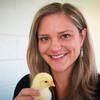Explore all the information on
Poultry management
Poultry management usually refers to the husbandry practices or production techniques that help to maximize the efficiency of production. Sound management practices are very essential to optimize production. Scientific poultry management aims at maximizing returns with minimum investment. A carefully controlled environment that avoids crowding, chilling, overheating, or frightening is almost universal in poultry farming. Cannibalism, which expresses itself as toe picking, feather picking, and tail picking, is controlled by debeaking at one day of age and by other management practices. The feeding, watering, egg gathering, and cleaning operations are highly mechanized. Birds are usually housed in wire cages with two or three animals per cage, depending on the species and breed, and three or four tiers of cages superposed to save space. Cages for egg-laying birds have been found to increase production, lower mortality, reduce cannibalism, lower feeding requirements, reduce diseases and parasites, improve culling, and reduce both space and labour requirements.
Frequent visits to an outdoor range has been associated with good meat chicken welfare but not all chickens will access the outdoor range when provided with the opportunity (Taylor et al., 2018). On average, it takes an average of three to four days for most meat chickens in commercial conditions to access the range after the pop-holes first open (Taylor et al., 2017a). Yet chickens that access the range soon after the pop-holes first open, range more frequently throughout their lives...
Comments : 0
Recommendations: 0
You are frying eggs for breakfast. You get distracted and the next thing you know your eggs are burning and your kitchen is filling with smoke. What do you do first? Open the window to get rid of the smoke or remove the skillet from the stove to stop the generation of the smoke? You of course, remove the skillet from the stove, then open windows because opening the windows in itself doesn't solve the problem, because your eggs are still burning and filling the kitchen with...
Comments : 0
Recommendations: 2
Jim Sumner (Treasurer and former President of IPC) shares his experience on the International Poultry Council and the poultry industry, and comments on the challenges to face, in this Engormix interview....
Comments : 0
Recommendations: 0
Nan-Dirk Mulder (Senior Global Specialist Animal Protein at Rabobank) offers insights into the markets, the value chain, and the global poultry industry, in this Engormix interview....
Comments : 0
Recommendations: 1
Gonzalo Moreno (FENAVI Executive President) comments on all the activities prepared for the 2024 FENAVI Congress that will take place from June 4th to 6th, in Bogota, Colombia....
Comments : 0
Recommendations: 3
Aidan Connolly (AgriTech Capital President) comments on how much and how fast can the poultry industry grow by embracing new technologies, in this Engormix interview....
Comments : 1
Recommendations: 0
Paulo Rigolin (Vice President of Alltech Latin America) talks about the experience of participating in the IPC Annual Meeting in Buenos Aires, Argentina, in this Engormix interview....
Comments : 0
Recommendations: 0
Gonzalo Moreno (FENAVI Executive President) comments on the relevance of a sustainability program as a managerial tool, and how to better communicate its impact, in this Engormix interview....
Comments : 0
Recommendations: 0
Mario Assayag (General Technical Manager Latin America at Aviagen) comments on the advances in biosecurity standards worldwide, in this Engormix interview....
Comments : 0
Recommendations: 0
Nath Morris (USPOULTRY President) talks about strategies against Avian Influenza and other challenges in the industry, as well as a new USPOULTRY podcast and expectations for the upcoming IPPE 2025, in this Engormix interview....
Comments : 0
Recommendations: 0
Paul Bredwell (Vice President of Environmental Programs at USPOULTRY) comments on the framework progress, great reception in the industry, and how to involve more people from the value chain, in this Engormix interview....
Comments : 0
Recommendations: 0
Introduction Broiler chickens require favourable rearing conditions to maximise their genetic potential for growth. Significant deviations from optimum rearing conditions can compromise feed utilization, growth performance, and bird welfare [1]. Stocking density is one critical rearing factor that has serious implications on the economic and social sustainability of the poultry industry. Globally, the accepted industry standard is to achieve between 30 and 38 kg bodyweight per...
Comments : 0
Recommendations: 0
.jpg&w=3840&q=75)

Srinivasa Farms and Hy-Line: Pioneering Growth in India’s Poultry Market
Suggested link
Introduction Locomotory activity is strongly associated with broiler chicken welfare; many behavioral patterns that depend on locomotion, such as exploration, seeking food, water, shelter, and escaping predators, are negatively affected by the poor walking ability in fast-growing broiler chickens [1]. Rapid muscle growth and exacerbated development of the Pectoralis major muscle in fast-growing broiler chickens change the chickens’ center of gravity, altering the...
Comments : 0
Recommendations: 1
Dr. Leonie Jacobs (Virginia Tech / Poultry Extension Collaborative) offers insights on poultry welfare and its potential for the future of production systems -and the industry as a whole-, during this Engormix interview....
Comments : 1
Recommendations: 1
Dr. Leonie Jacobs (Virginia Tech / Poultry Extension Collaborative) explains how poultry welfare has gained relevance and created awareness in the industry, and comments on some interesting projects, during this Engormix interview....
Comments : 1
Recommendations: 0
Dr. Leonie Jacobs (Virginia Tech / Poultry Extension Collaborative) talks about PEC goals, publications, and initiatives (including courses and an upcoming symposium) during this Engormix interview....
Comments : 1
Recommendations: 1
This is a call for abstracts for the 2024 Poultry Science Association Latin American Scientific Conference. Abstracts must be submitted in English using the ...
Comments : 0
Recommendations: 0
The holiday season is once again here, which means many kitchens will be filling up with baked goods and savory dishes. It is also the time of year when the use of eggs increases for all of those delicious dishes! However, eggs can be a potential source of Salmonella bacteria that can cause illness or in rare cases even death. Here are some tips to...
Comments : 0
Recommendations: 0
The hatching phase of broiler production refers to the last three days of incubation, which are embryonic days 18-21. This phase of embryonic development is critical for the chick’s survival, as well as welfare and production later in life. In commercial hatcheries, eggs with viable embryos are transferred from incubators to...
Comments : 0
Recommendations: 0
Light and dark cycles within a 24-hour period play a crucial role in maintaining physiological and behavioral rhythms in animals. In birds, daily rhythms associated with feed intake, physical activity, sleep-wake cycles, and physiological rhythms are influenced by photoperiod. The ancestors of domestic chickens, the Red...
Comments : 0
Recommendations: 0



.jpg&w=3840&q=75)




.jpg&w=3840&q=75)





.jpg&w=3840&q=75)



















